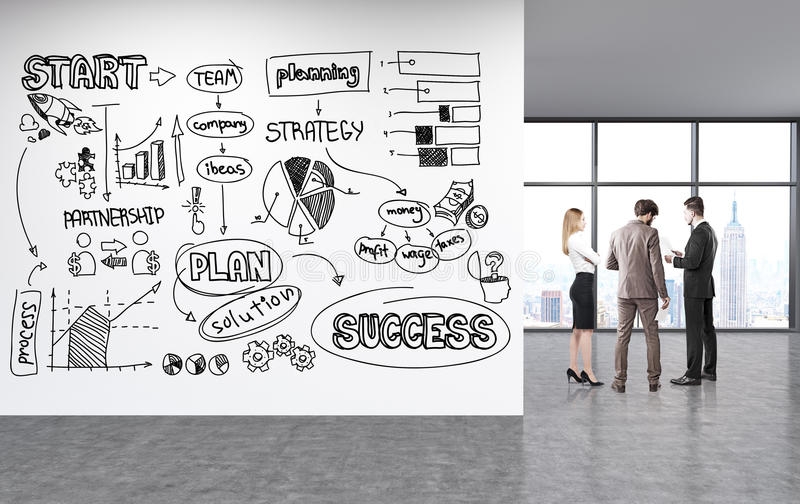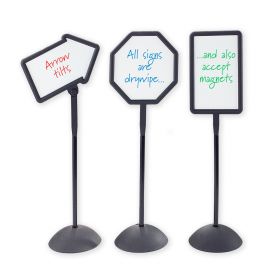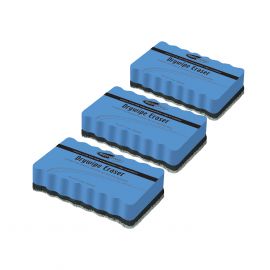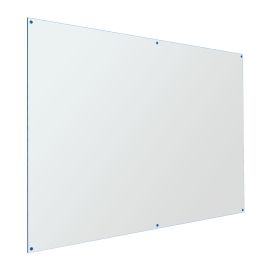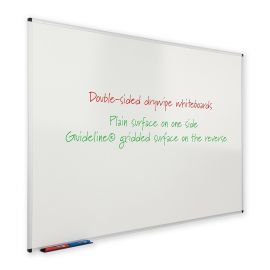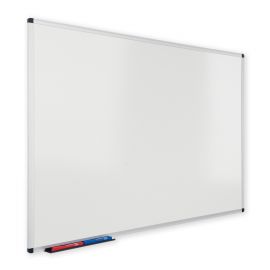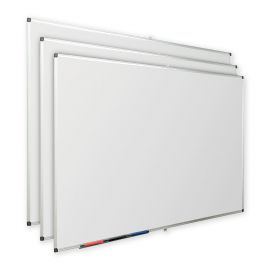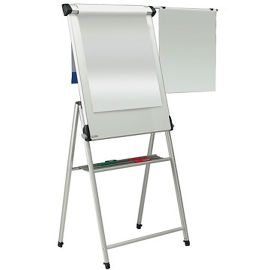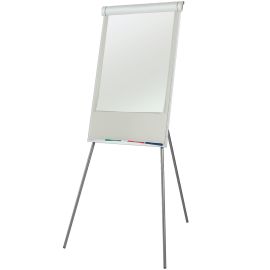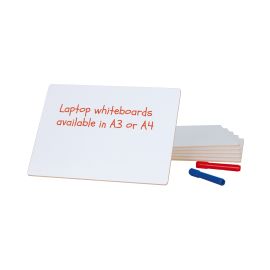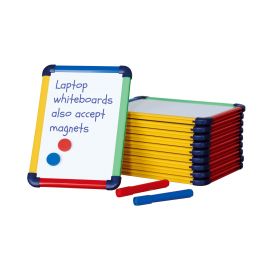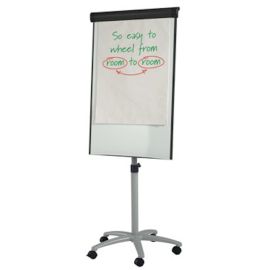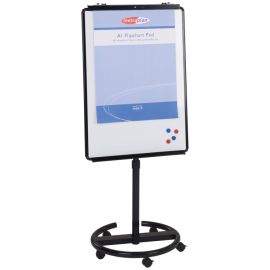The History of Whiteboards
- 3 Mar 2020
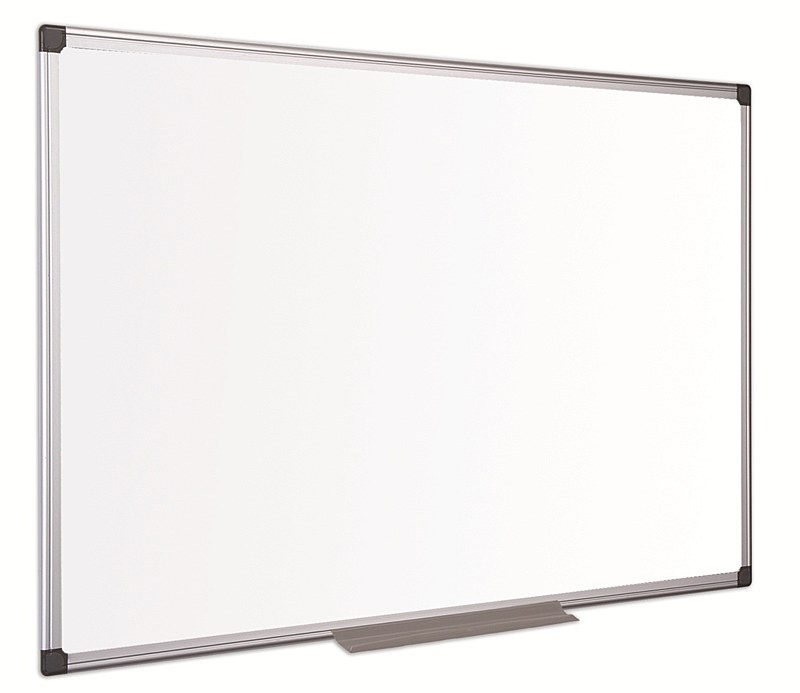
The History of Whiteboards
In this blog we talk in brief about the history of the whiteboard, looking at:
- When was the Whiteboard Invented?
- Who Invented the Whiteboard?
- Why are Whiteboards So Useful?
- How long do Whiteboards Last?
- When did Whiteboards start to replace Chalkboards in Schools?
- Different Names for Whiteboards
No classroom or boardroom is complete without a whiteboard (or two, or three!). They are widely used, and recognised as a vital piece of equipment in any meeting setting. While you might struggle to remember a time before the ubiquitous whiteboard, they rose to popularity during the mid-1990s. Over the next decade, they took over the role of blackboards within school classrooms, offices, and meeting rooms around the world.
Why were people initially so attracted to whiteboards over the old stalwart, the chalkboard? They have a smooth glossy surface, can be easily wiped clean, and are ideal projection surfaces for PowerPoint, slideshows, and videos. They soon pushed the traditional chalk and chalkboard to the side, relegating them to near-extinction.
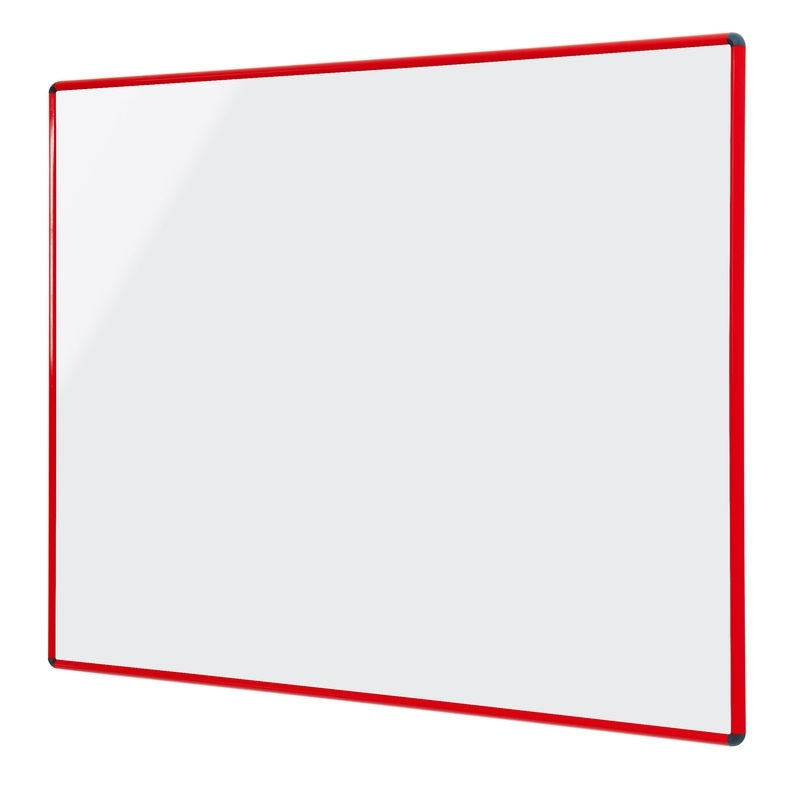
When was the Whiteboard Invented?
Whiteboards began to soar in popularity in the mid 1990s, but they were actually invented and became commercially available in the 1950s. In the early days they were not widely accessible, and so they didn't become popular until decades later – people didn’t yet know what they were missing!
The early versions of whiteboards needed to be wiped down with a damp cloth to remove the marker ink; and even then, marks were inevitably left behind. Dry-wipe markers had not yet been invented, and so stains were inevitable. We’ve likely all experienced the annoyance of trying to remove permanent marker from a whiteboard!
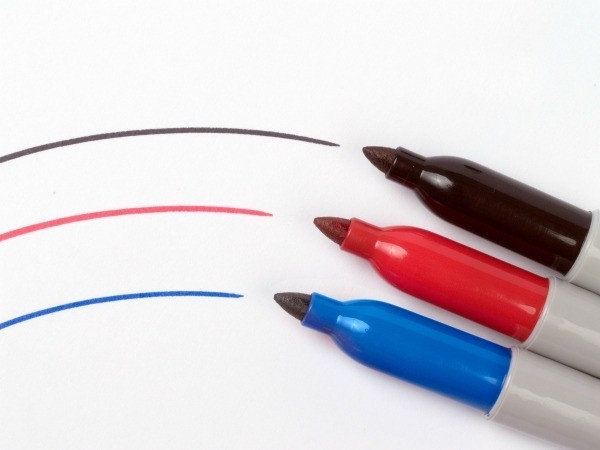
The lack of suitable markers caused issues with reusing the board, and so most people chose to stick with the traditional chalkboard, where they could brush away chalk with ease. Thankfully, dry-wipe markers were finally invented in 1975. This was a critical turning point for this technology, and helped drive the popularity of whiteboards.
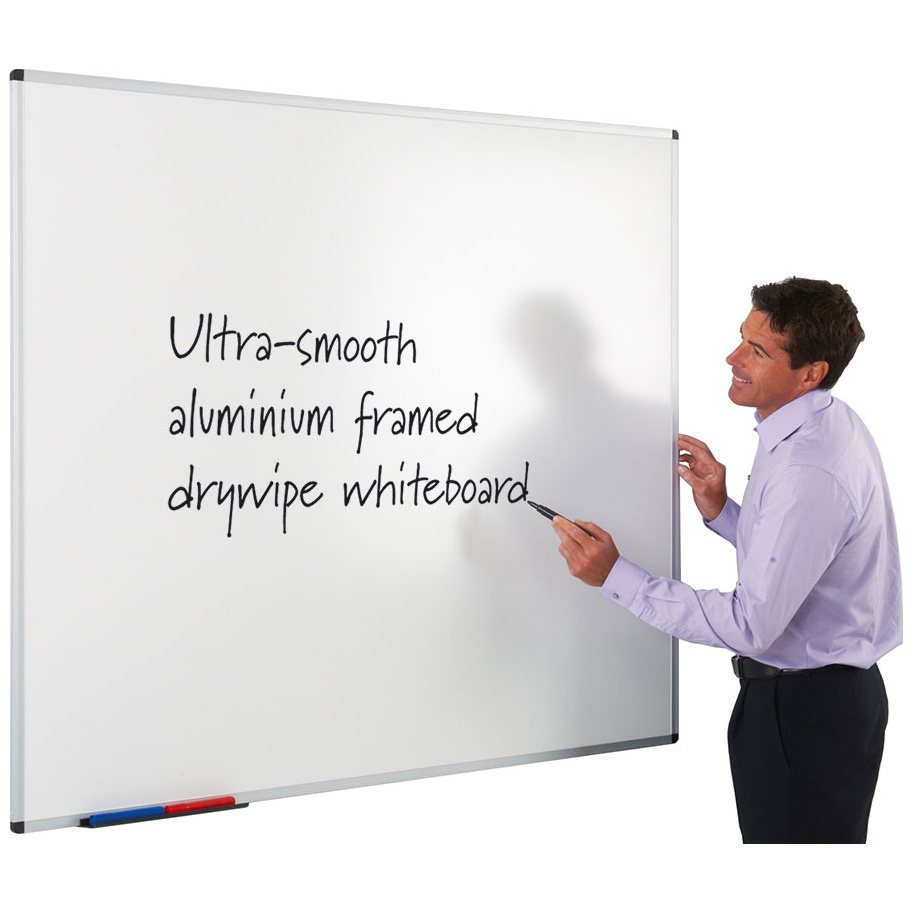
Who Invented the Whiteboard?
Two key people are often credited for the invention of the whiteboard. The first was a photographer called Martin Heit. He developed the idea in the late 1950s, conceptualising the idea as a small scribbling board that would be hung on the wall next to a telephone.
Mr Heit had thousands of film negatives, owing to his profession as a photographer. He used these as small note pads when he was talking to clients, as he would write on the negatives using a marker pen. He was then able to easily wipe the negatives clean, and use them again with his other clients. Heit had initially decided that he was going to display and promote his invention at the Chicago Merchandise Mart.
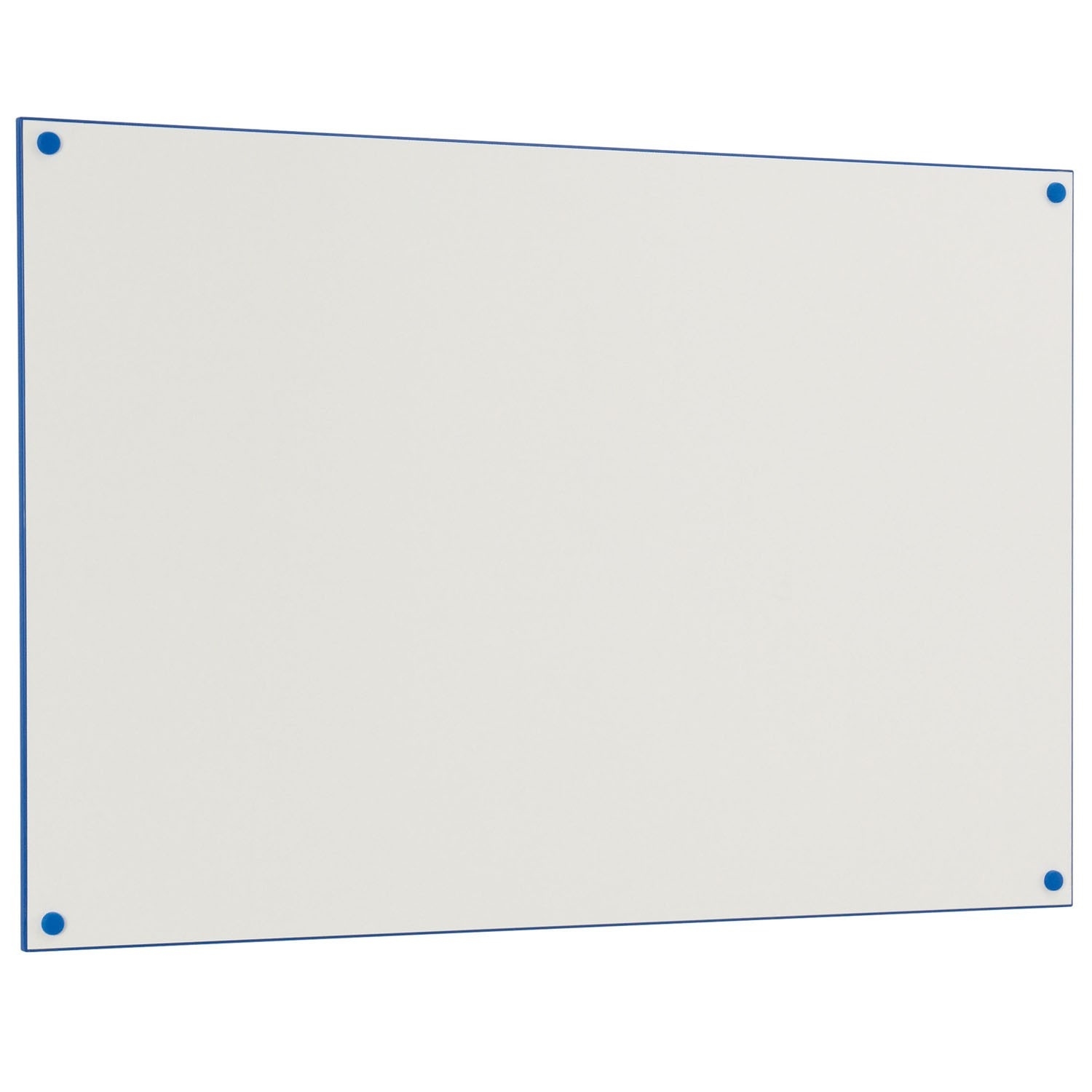
However, this didn't go according to plan, as the venue unfortunately burnt down the night before the launch! As a result, Heit decided to sell the patent for his idea to a company, which would eventually become Dri-Mark. Dri-Mark then went on to be the first company to introduce the whiteboard to schools and educational facilities.
The other most notable person in the history of whiteboards was Albert Stallion, who claimed to have invented the whiteboard in the 1960s. Stallion was working for an American steel production company when he discovered that an enamelled steel sheet could be a useful writing surface. He realised that they could potentially be a better alternative to chalkboards. As a result, Mr Stallion decided to leave the company in order to launch his own whiteboard business, which he named MagiBoards.
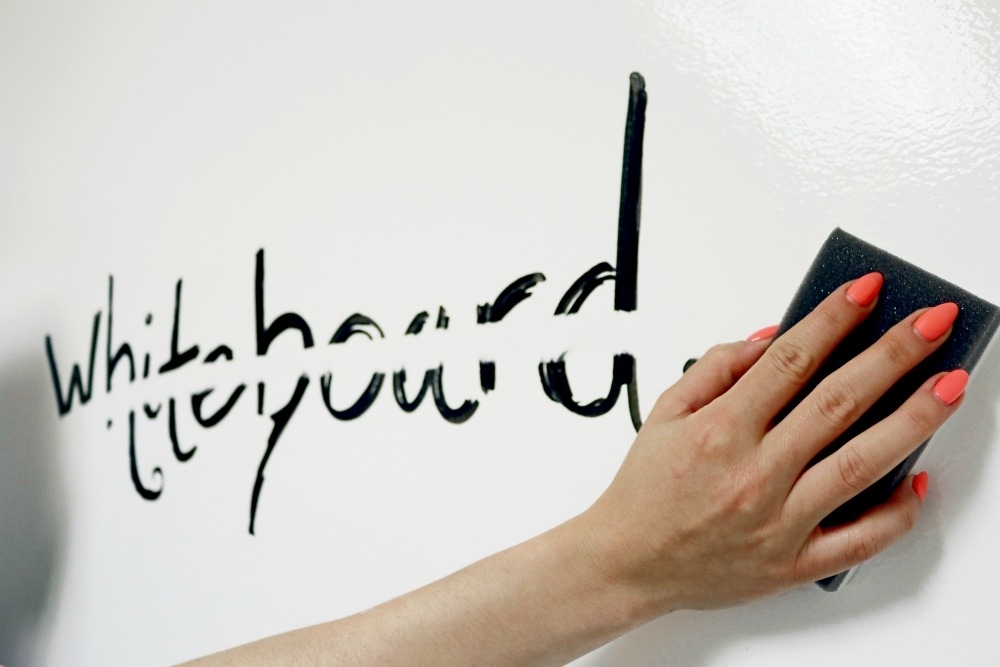
Why are Whiteboards So Useful?
Whiteboards can be utilised in myriad creative and useful ways, in your home, office, classroom, retail setting, or boardroom. Here are just a few of the ways that they can be used to foster communication and education.
Learning and Development
Whiteboards take centre stage in many rooms in which learning and development occurs. They enable a teacher, student, or employee to communicate their ideas and demonstrate their knowledge. This in turn helps the other people in the room to understand what is going on and visualise the data, helping them engage with the material in a more beneficial way.

Stay on track
Whiteboards help keep everything – and everybody - on track, as they are a literal way for everyone to ‘be on the same page.’ This can be particularly helpful with something like a monthly calendar, allowing you to keep track of everything that is going on within the business. Being able to visualise this data is extremely beneficial in managing upcoming projects and monitoring progress. A whiteboard can also be used to ensure that nobody forgets any critical events that are approaching, such as deadlines, conferences, and holidays.
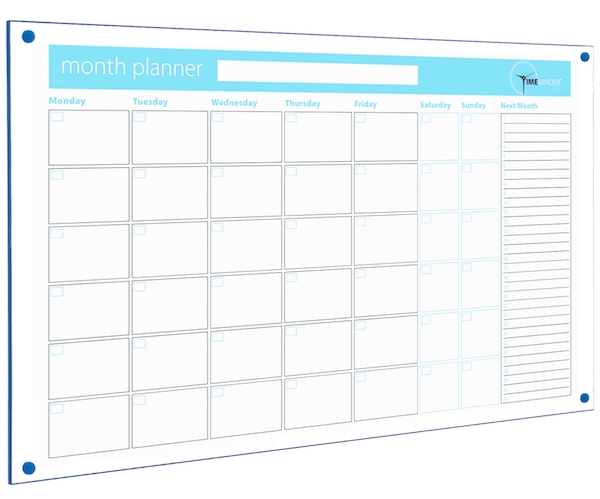
Monitoring Duties
Whiteboards can be used as a visual representation of a rota of duties for which each employee or student is responsible. The saying ‘out of sight, out of mind’ certainly comes in to play here. If people see the whiteboard every morning, they are more likely to remember their duties, and then carry them out.
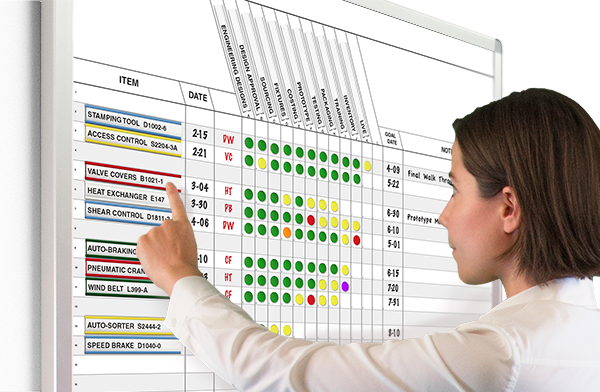
Track Employee Efficiency
A whiteboard is a fantastic way for tracking specific performance metrics, such as production data, goals, performance figures, and sales targets. While every business needs to improve its efficiency as a whole, it all starts with the individual. If each person is as efficient as possible, the overall organisation will be stronger.
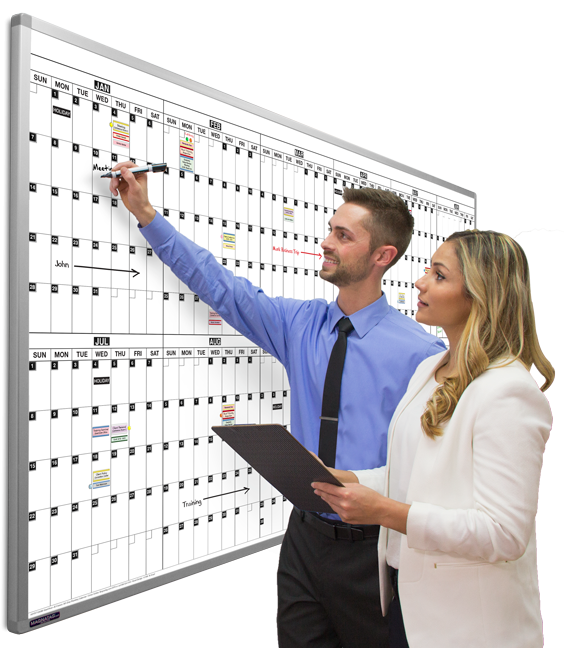
Read more: Top uses for magnetic whiteboards
How long do Whiteboards Last?
How long a whiteboard will last depends on the quality of its materials and its construction, so the answer can vary widely from brand to brand. A whiteboard’s longevity also depends on how well it is cared for, where it is placed, and if it is moved from location to location, which could weaken its structure.
Whiteboards that are made from plastic will have a lifespan of between 1-5 years, whereas those made from more durable materials can last from 10-20 years, or even longer. As with any office furnishing, it pays to take good care of your whiteboard.
Read more: What materials are used to make whiteboards?
When did Whiteboards start to replace Chalkboards in Schools?
As discussed, whiteboards were beginning to make their appearance as early as the 1950s. However, whiteboards didn't start appearing in schools until the 1990s. Most schools were perfectly happy using the chalkboards that they had had for centuries, but the rise of computers threw a spanner in the works.
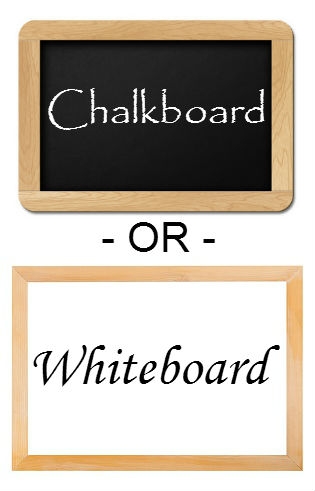
Numerous articles were published discussing the negative effects of chalk dust on computers; this was often cited as a critical reason for eliminating chalkboards from the classroom. As the number of computers within schools started to soar, more and more schools decided to make the switch to whiteboards.
Similarly, with the introduction of projectors, schools could more easily project a PowerPoint presentation or video onto a whiteboard than onto a blackboard. The flexibility and ease of use of a whiteboard is far greater than a chalkboard, so it is no wonder that they have been embraced so completely in schools.
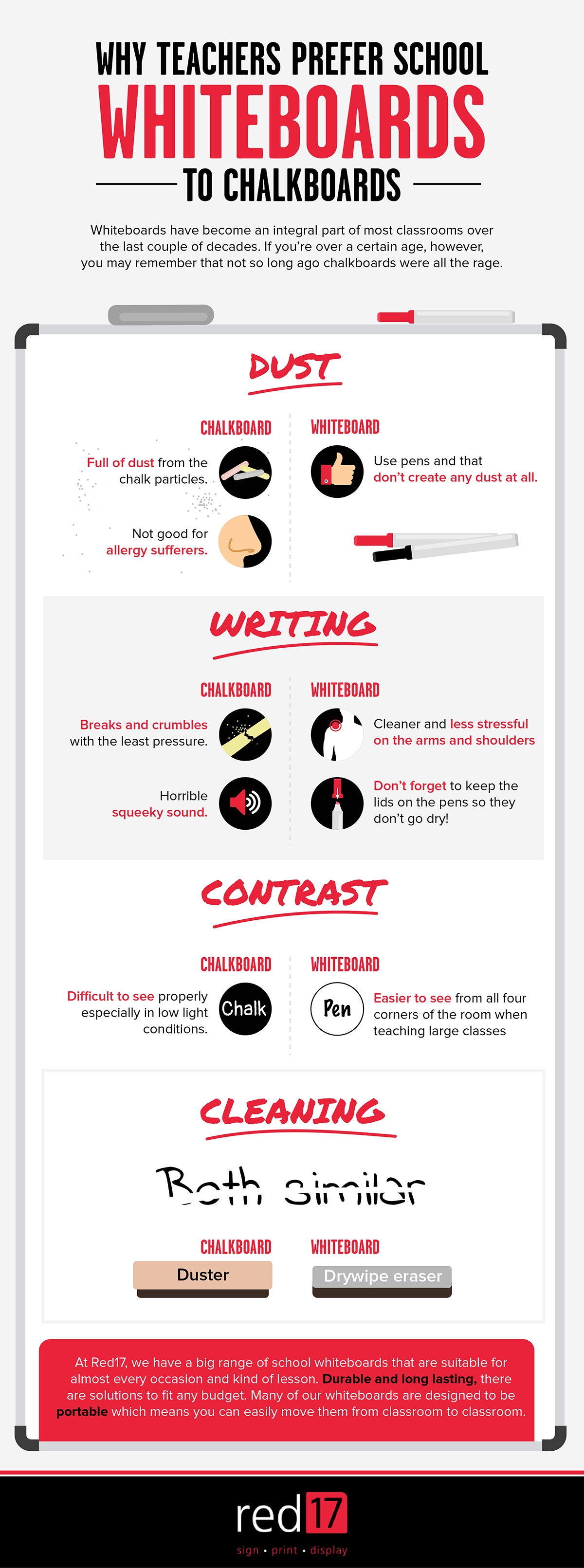
Read more: Why Teachers Prefer School Whiteboards to Chalkboards
Different Names for Whiteboards
Whiteboards have many different names that people often use interchangeably. They can be called dry erase boards, dry wipe boards, marker boards, wipe boards, and pen boards. All of these terms refer to the white, glossy boards used in classrooms and offices.
No matter what name you call them, whiteboards are a vital piece of equipment in any classroom or office. Wall-mounted whiteboards, portable whiteboards, and even smaller, personal whiteboards are all available, in differing sizes, shapes, and colours.
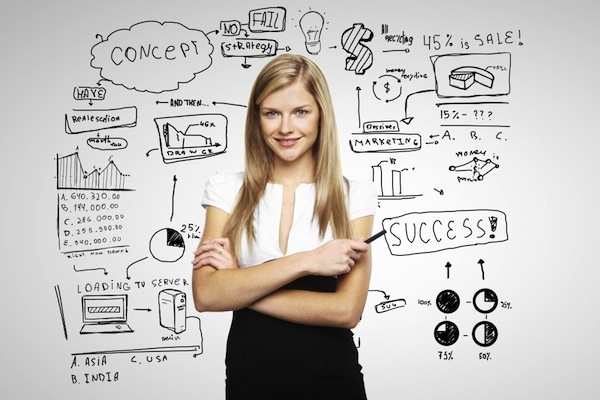
Our friendly and knowledgeable Red17 team would be more than happy to help you choose the right whiteboards for your space. We can advise you on the best whiteboards for your budget, setting, and desired uses. Don’t hesitate to call or email us with your questions.
If you enjoyed this article, you may also like…
Whiteboards: The Ultimate Guide
Shop here:
